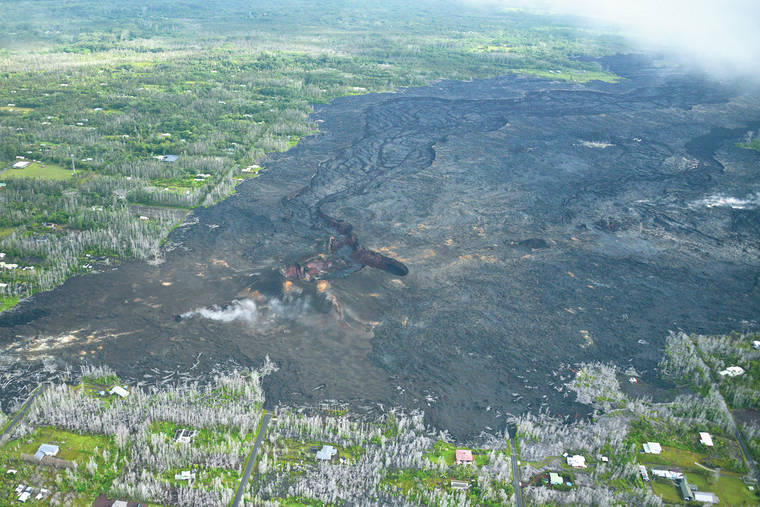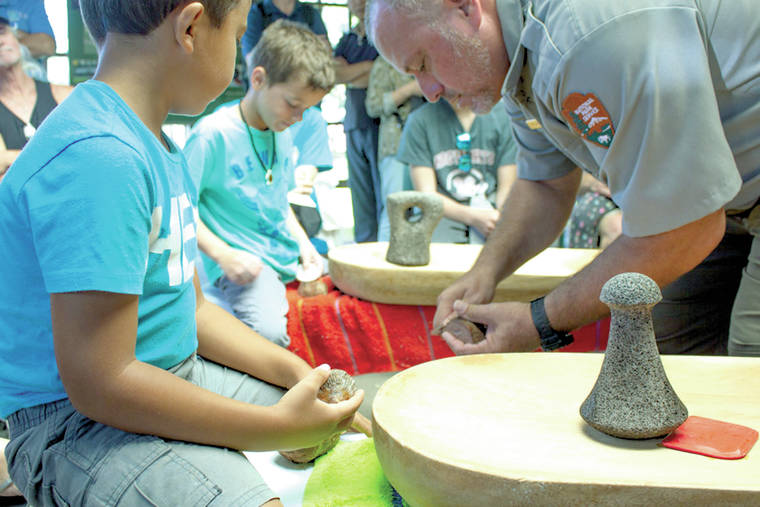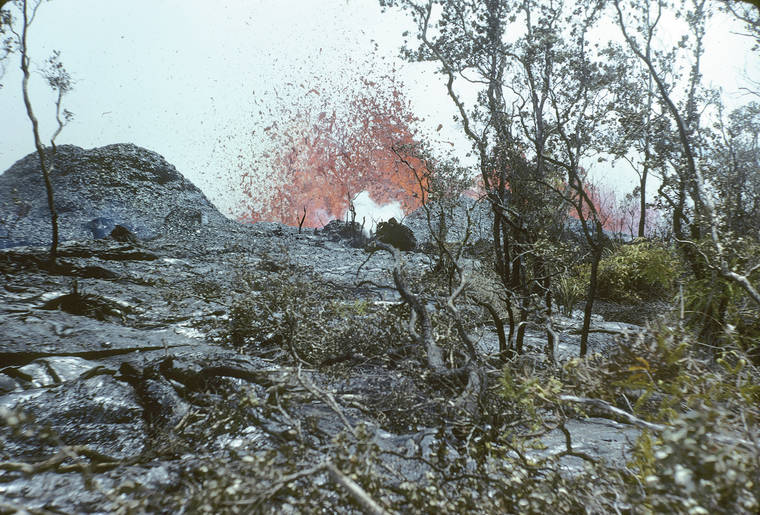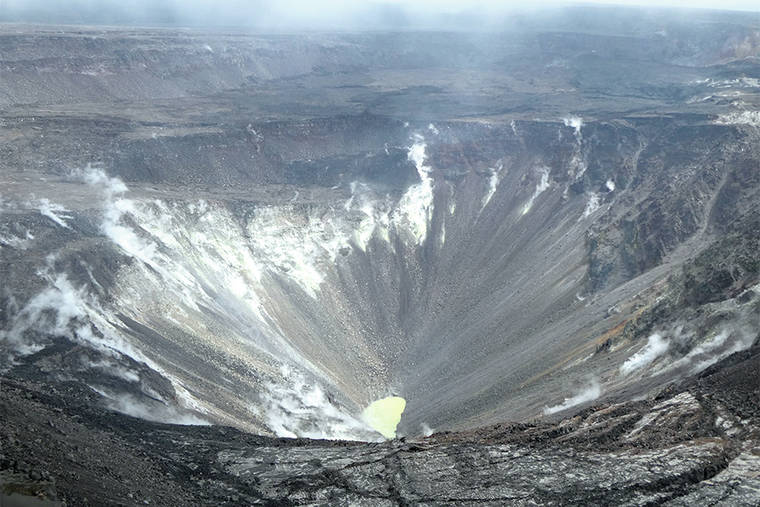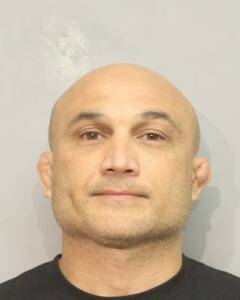January is Volcano Awareness Month and Hawaii Volcanoes National Park is pleased to host After Dark in the Park talks and guided hikes with USGS Hawaiian Volcano Observatory scientists all month.
In addition, the park continues its tradition of sharing Hawaiian culture, stewardship programs and opportunities to explore the Kahuku Unit throughout January 2020.
The following special events are free, but park entrance fees normally apply.
Guided hikes of Kilauea Iki Crater
This 4-mile trail is one of the park’s most iconic. It’s a popular destination for hikers, who cross a steaming crater floor through the intersection of eruption and native rain forest. Most leave without knowing how the crater was formed or how three eruptions since 1823 have filled it with more than 400 feet of lava. Delve into the secrets of Kilauea Iki with park ranger Michael Newman. Moderately difficult hike with an elevation gain of 400 feet.
When: 10 a.m. Mondays, Jan. 6, 13, 20 and 27
Where: Meet Newman at the Kilauea Iki Overlook parking lot.
Transitions: What’s next for HVO and the volcanoes it monitors?
The past two years saw profound change at Kilauea Volcano and HVO. Devastation caused by the largest lower East Rift Zone eruption and summit collapse in at least 200 years resulted in many transitions for island residents, including HVO. Tina Neal, scientist-in-charge of the HVO, describes the current status of Kilauea and Mauna Loa and what might be coming next. She also recaps HVO’s situation since having to vacate its building at Kilauea’s summit and shares info on the exciting next steps for the volcano observatory in 2020 and beyond.
When: 7 p.m. Tuesday, Jan. 7
Where: Kilauea Visitor Center Auditorium
‘Ai Pono — Healthy Hawaiian foods
Aunty Edna Baldado discusses eating and living healthier with native Hawaiian foods such as kalo, ‘uala and ‘ulu.
When: 10 a.m.-2 p.m. Wednesday, Jan. 8
Where: Kilauea Visitor Center lanai
A walk through Kilauea Volcano’s summit history
Join HVO scientist emeritus Don Swanson on a two-hour walk, during which you learn about the past 500 years of Kilauea’s history as revealed by rocks, craters and cracks. Along the walk, Swanson points out and explains some of the features that formed during the 2018 summit collapse events, as well as the best publicly accessible display of explosive deposits erupted from Kilauea about 230-370 years ago, one of which probably relates to an important oral tradition. Swanson also shows two contrasting vents for the July 1974 eruption, highlights the thick deposit of pumice and scoria erupted in 1959 and ponders the origin of Keanakako‘i Crater. A park ranger will be available to answer questions about HVNP.
When: 8 a.m. Thursday, Jan. 9; Friday, Jan. 17; and Wednesday, Jan. 22
Where: Meet before the start time at the Devastation Trail parking lot.
Hike the path of Mauna Loa’s 1868 lava flow
Geologists Katie Mulliken and Lil DeSmither lead this guided hike along the Pu‘u o Lokuana trail in the Kahuku Unit. During the hike, learn about the eruptive history, structure and current status of Mauna Loa, Earth’s largest active volcano, as you traverse lava flows from its 1868 eruption. Mulliken and DeSmither explain the volcanic features along the trail and tell the story of the destructive eruption and associated earthquakes in 1868. They also share information about how HVO monitors Mauna Loa, which has erupted 33 times since 1843, most recently in 1984. A park ranger will assist with the hike to answer questions about the Kahuku Unit.
When: 10 a.m. Saturday, Jan. 11
Where: Kahuku Unit
What’s happening at Kilauea Volcano’s summit?
Kilauea’s summit has been in an eruptive pause since the 2018 events ended more than a year ago. Nevertheless, it remains a dynamic place. Ongoing inflation and seismicity indicate the summit magma chamber is gradually recharging. A water lake, unprecedented in the written historical record, appeared at the bottom of Halema‘uma‘u in late July and has steadily risen. What are the potential hazards at Kilauea’s summit? Could explosive activity return? What is known about the water lake? How is it monitored? Join geologists Matt Patrick and Tricia Nadeau as they answer these questions and more.
When: 7 p.m. Tuesday, Jan. 14
Where: Kilauea Visitor Center Auditorium
Hike back in time to the 1969-74 Mauna Ulu eruption
Geologist Carolyn Parcheta leads this two-hour guided walk along the fissure that started the Mauna Ulu eruption on May 24, 1969. Lava continued to erupt during the next five years, making it the longest observed effusive rift eruption at the time. The eruption ultimately built a lava shield, Mauna Ulu, a prominent landmark on Kilauea’s East Rift Zone. It also sent lava flows to the coast and allowed for detailed observations of eruption processes. During the walk, Parcheta describes how fissures form, how lava fountains erupt, how these eruptions create the environment you see and why some lava drained back into the ground. She also discusses her research that revealed just how deep the fissure extends into the ground. A park ranger assists to answer questions about HVNP.
When: 10 a.m. Saturday, Jan. 18
Where: Meet before the start time at the Mauna Ulu parking lot.
Fee-free day in honor of Martin Luther King Jr.
All fee-charging national parks, including HVNP, Pu‘uhonua o Honaunau National Historical Park and Haleakala National Park, are free to enjoy on this day.
When: Monday, Jan. 20
Kilauea lower East Rift Zone 2019: Quiet but insightful
In the year since Kilauea’s notable 2018 eruption ended, the lower East Rift Zone has been relatively quiet. But HVO scientists continue to gain insight into the eruption through ongoing research and monitoring. For answers to some of the many questions asked by island residents, join geologist Carolyn Parcheta as she explores queries and shares recent observations and findings by HVO scientists.
When: 7 p.m. Tuesday, Jan. 21
Where: Kilauea Visitor Center Auditorium
Ku‘i kalo — Pound poi
Make poi, the staple food of the Hawaiian diet. The root of the kalo plant is cooked and pounded to create this classic Hawaiian dish. Join park ranger Keoni Kaholo‘a‘a as he shares his knowledge of kalo.
When: 10 a.m.-noon Wednesday, Jan. 22
Where: Kilauea Visitor Center lanai
Seismicity of the 2018 Kilauea Volcano eruption
The 2018 Kilauea eruption produced unprecedented levels of seismicity in the volcano’s instrumented history. HVO documented about 80,000 earthquakes during the three-month eruption. The sequence included a magnitude-6.9 south flank earthquake, the largest for Hawaii in 45 years. HVO seismologist Brian Shiro recounts the 2018 earthquake story, including how HVO adapted its techniques to monitor the events, and describes current levels of seismicity and HVO’s ongoing efforts to improve seismic monitoring.
When: 7 p.m. Tuesday, Jan. 28
Where: Kilauea Visitor Center Auditorium





